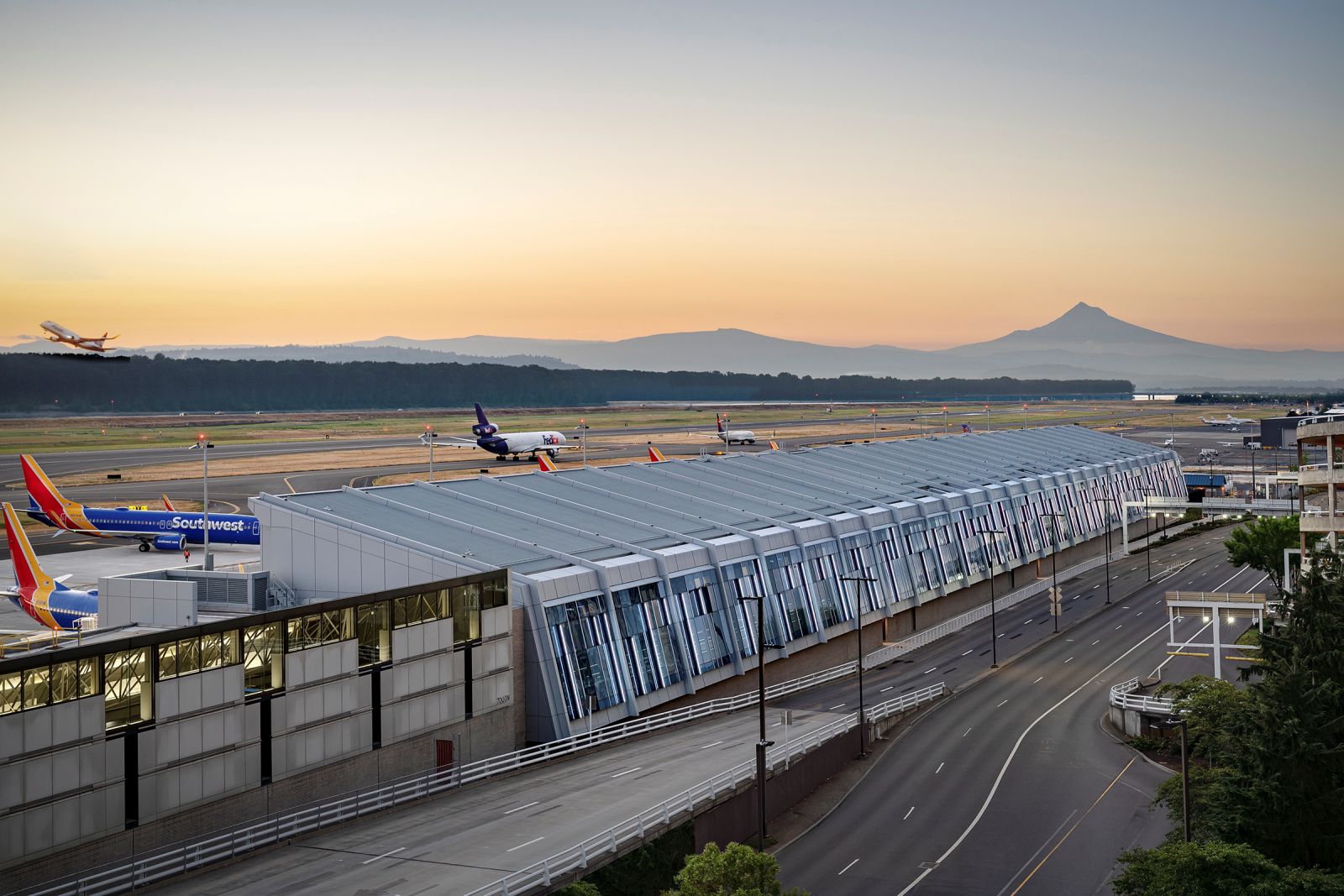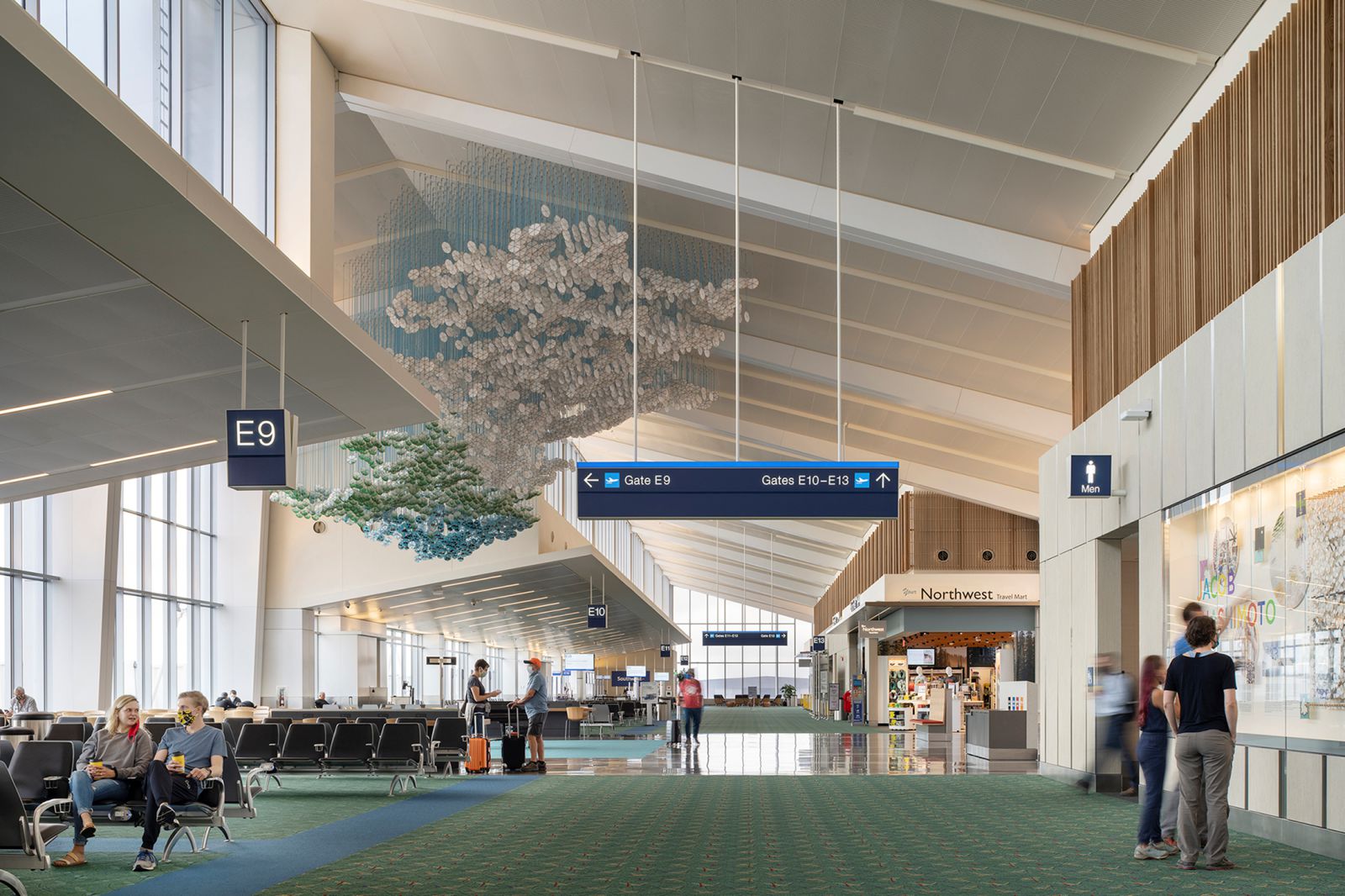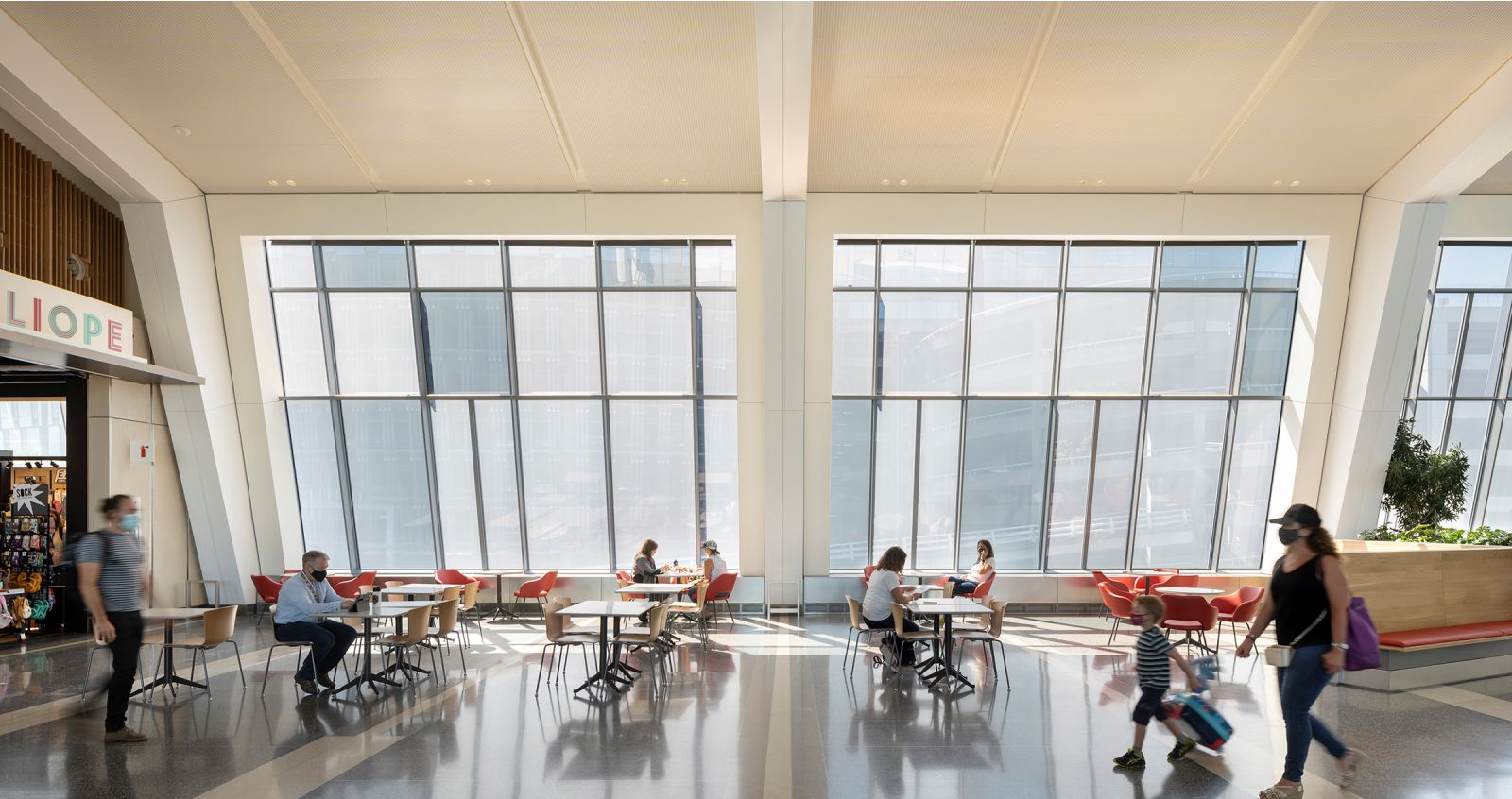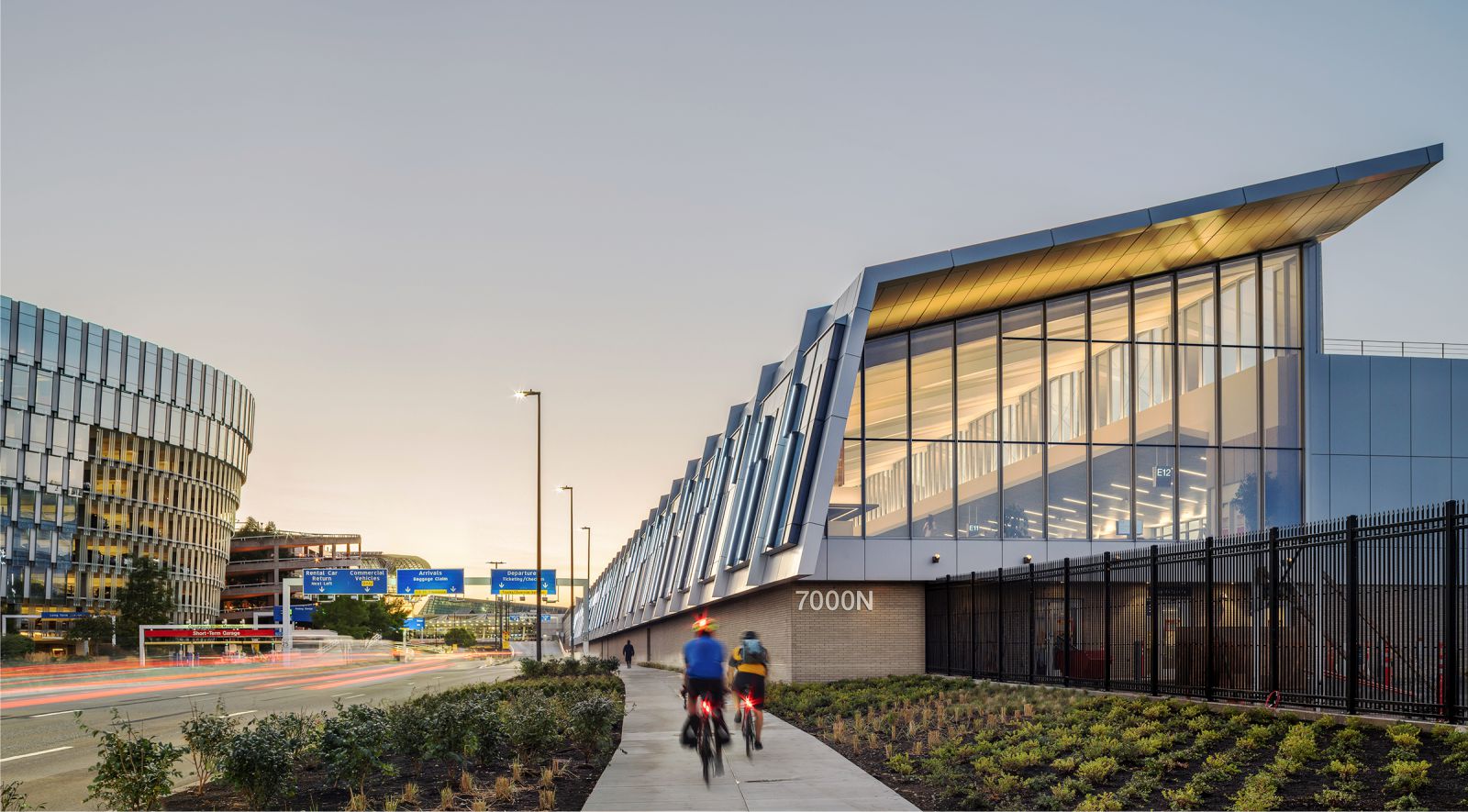Hennebery Eddy, in partnership with Fentress Architects, designed an extension of Concourse E and airline relocations to balance passenger and infrastructure demands on the north and south sides of the facility.
Context
Embarking on its first major project in the Terminal in nearly 20 years, the Port of Portland (Port) sought to re-balance the number of passengers using the north and south sides of Portland International Airport.
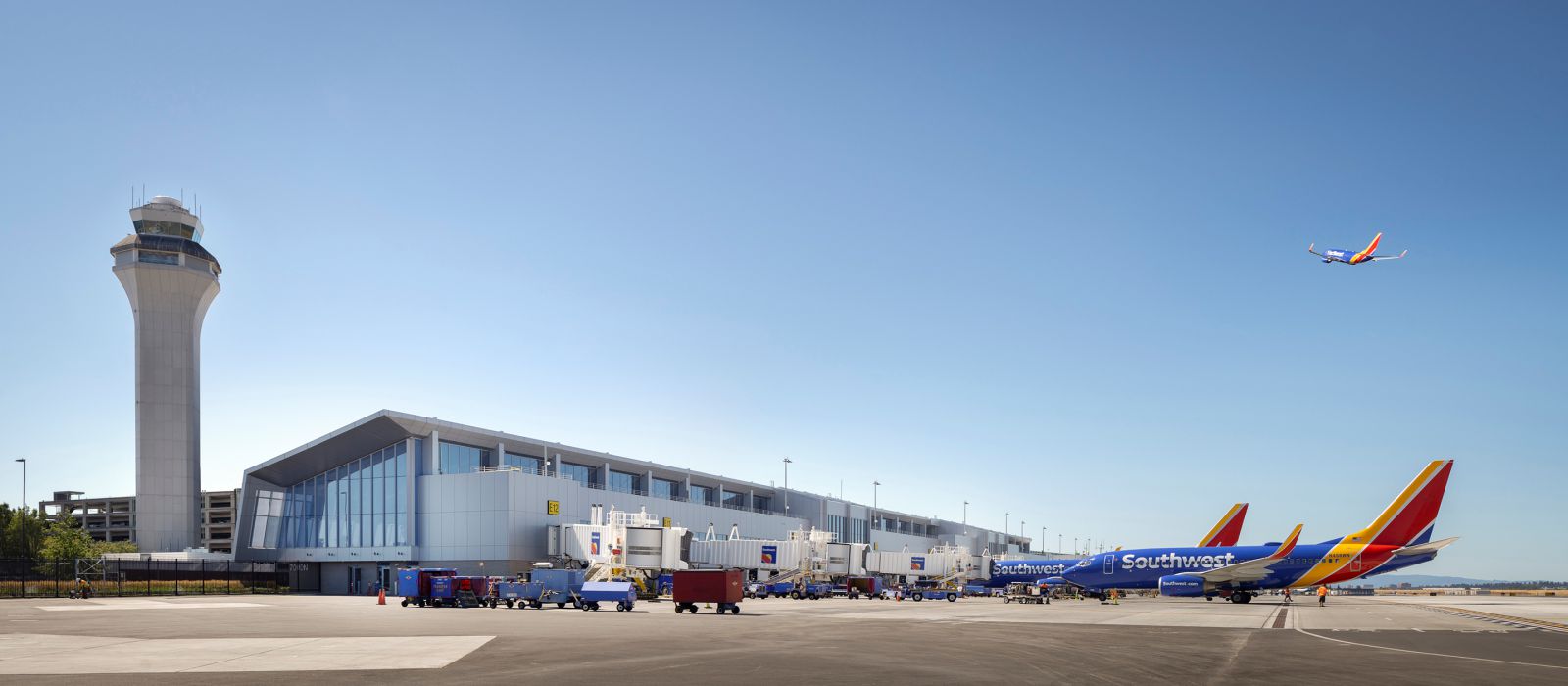
Extending Concourse E east 830-feet and adding 137,000-square-feet, this $215M project creates seven contact gates and two ground-loading gates, enabling Southwest Airlines to relocate to the north side, while various food/beverage and retail concessions, restrooms, airline operations spaces, and support spaces reflect the Port’s “Uniquely PDX” brand experience.
Character & Regional Inspiration
Poised as an impactful gateway, the extension design complements the materials and form of the existing airport campus and offers an iconic Portland experience for travelers.
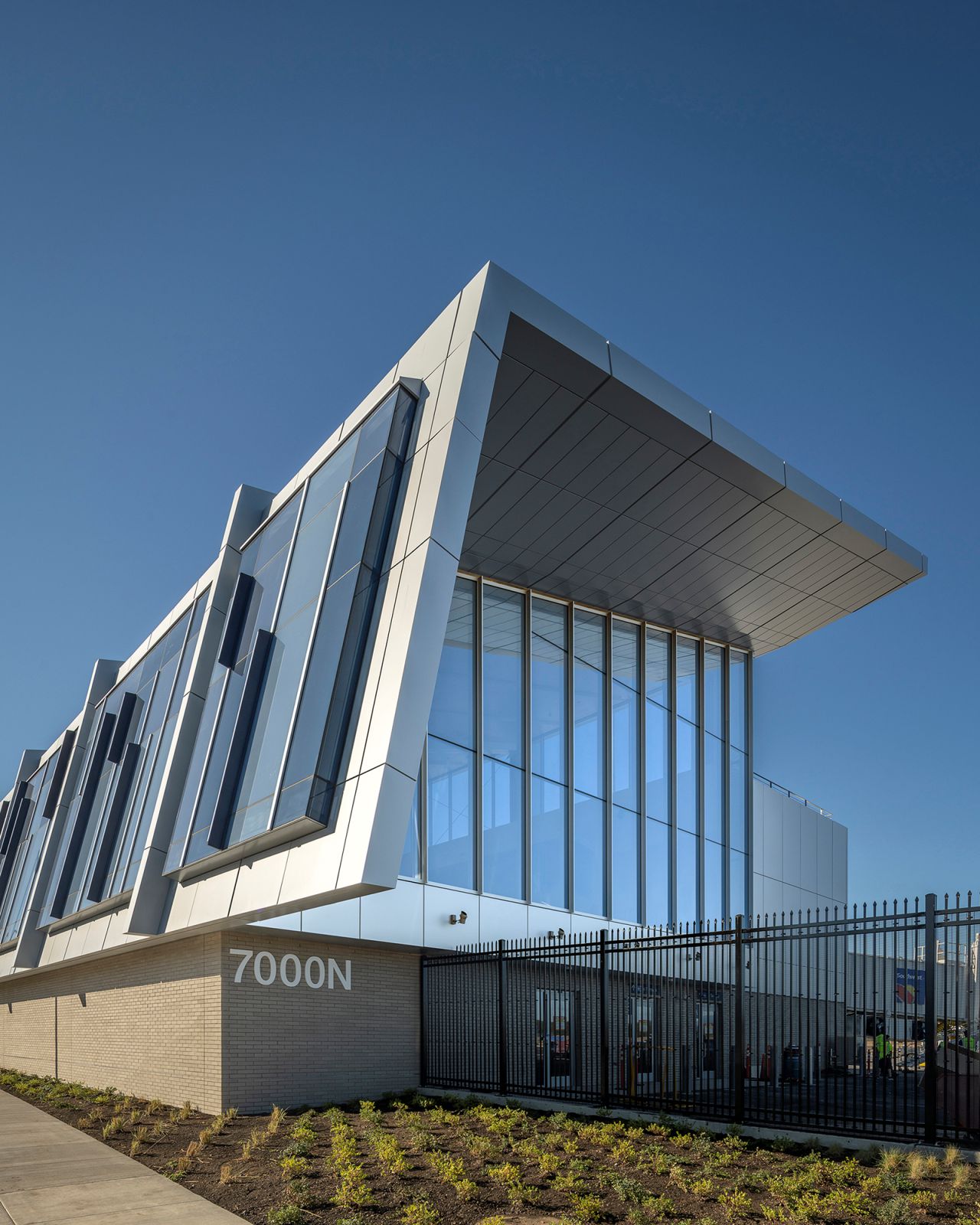
The cantilevered and folded biophilic roof form inspired by Oregon’s canyons, and extensive curtainwall glazing, reflect the Port’s sloped and cantilevered headquarters building and ticket lobby entrance glazing, directly adjacent from the site. The building’s section evokes flight during the day and unveils activity inside the concourse after dark.
The south façade celebrates Oregon’s forest edges through a custom pattern of colored glass and mullions of various depths. The impact of these design elements is apparent on the interior: clerestory windows punctuating the roof wash the space with north light and frame preflight views to the sky.
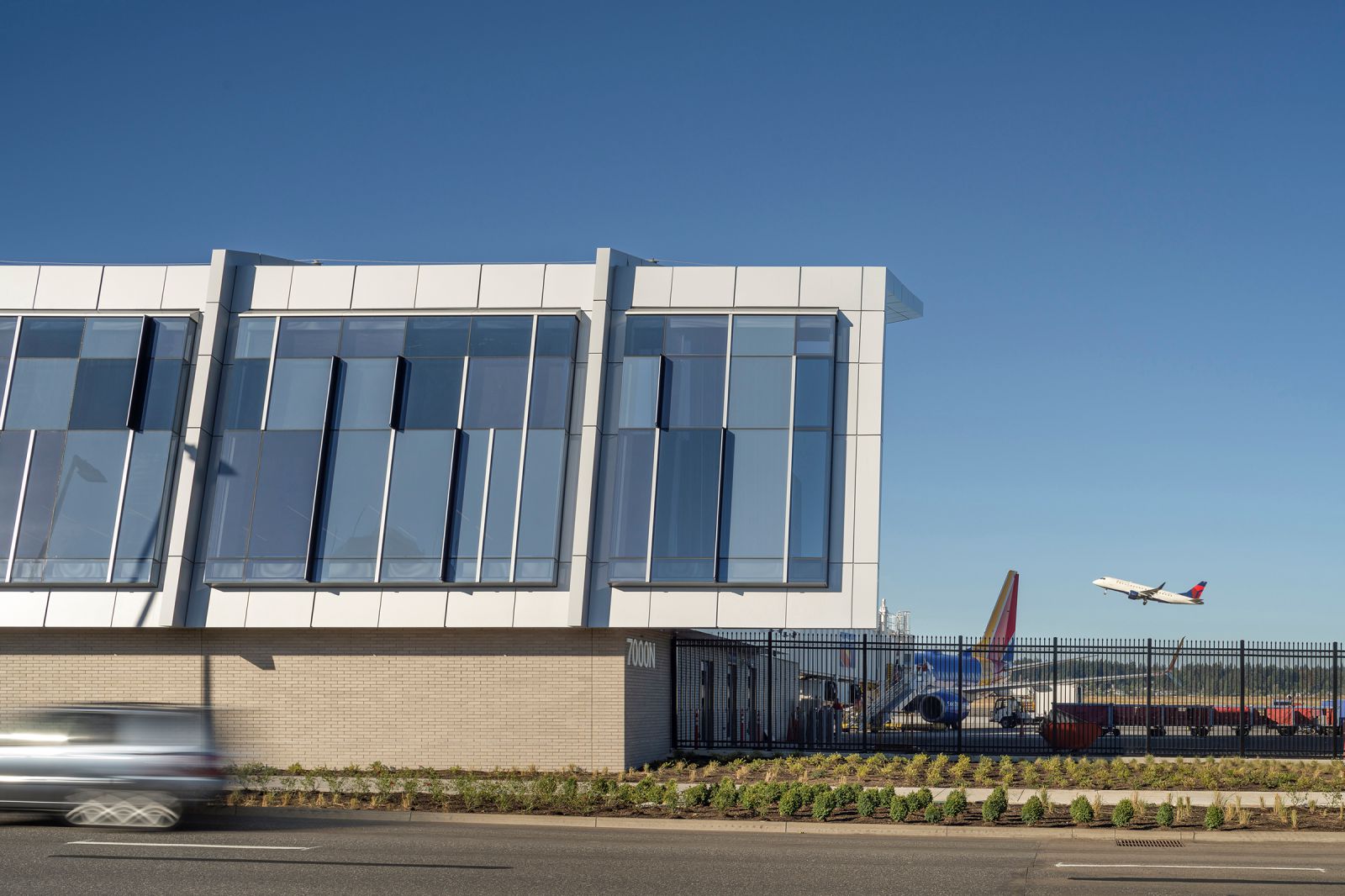
The sweeping sloped south curtainwall also floods the interior with natural light, tempered by varying intensities of frit and tinted glazing and offering views to the airport campus. Vast window walls provide views north to the airfield and landscape beyond, offering a sense of place.
Reflecting the Walkable City
Downtown Portland’s celebrated 200-foot city block grid inspired 200-foot spacing of concessions “nodes” that interrupt the 830-foot-long concourse circulation, just as cross streets do when walking downtown. Dramatic full height glazing to the north and aerial art installations give respite to the length of the concourse.

Universal design throughout the concourse and terminal reinforces social equity for all users – passengers and employees. Permanent and rotating art installations reflect and celebrate diversity. Moving walkways and opportunities for rest assist aging populations and others when walking long distances. A lactation room provides privacy and respite.
Sustainable Design & Anticipating Future Change
A 30-foot structural rhythm of folded, clear span steel beams form the roof and accommodate the clerestory windows along the length of the concourse.
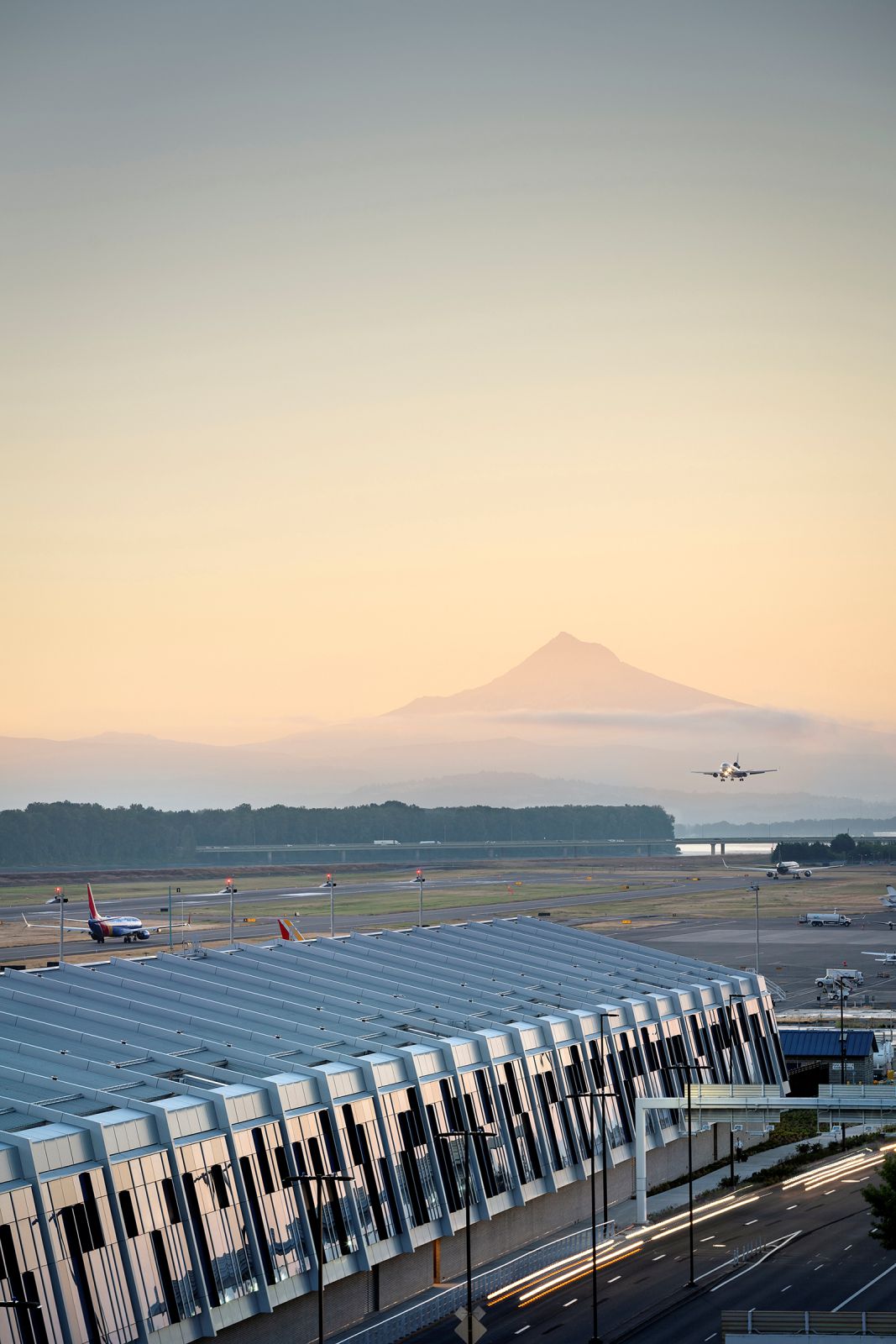
This clear span anticipates future modifications to interior composition, whether for changes in aircraft size, boarding processes, or other technology advances. Extensive daylighting, recycled materials, remediation of contaminated soils, and other strategies contributed to LEED Gold certification.
Energy conservation measures employed in the project reduce the predicted energy consumption by 22%, or 719,600 kilowatt hours (kwh) of electricity annually – equivalent to 557 tons of carbon dioxide, low-flow fixtures and low-irrigation landscaping reduce water consumption by 33%. The entire south-facing roof of the concourse is solar ready. Source by Hennebery Eddy.

- Location: Portland, Oregon, USA
- Architect: Hennebery Eddy
- Project Team: Timothy Eddy, Michelle Vo, Gregg Sanders, Michael Meade, Camilla Cok, Alexander Lungershausen, Pooja Kashyap, Danae Sakuma, Ashley Nored, Aly Pierce, Heidi Bertman, Patrick Boyle, Lindley Bynum, Julia Harding, Kathy Johnson, Adam Lawler, Tristan Magnuson, Jessy Miguel, Scott Moreland, Stephanie Pak, Ben Nelson, Irene Ng, Emily Green, Ellen Osborne, Abby Short, Jacob Simonson, Kevin Wade, Meghan Wirtner
- Design Partner: Fentress Architects
- Fentress Architects design team: Mark Outman, Tom Theobold
- Interior Design: Hennebery Eddy
- Civil Engineer: HNTB Corporation
- Structural Engineer: KPFF Consulting Engineers, Inc
- Mechanical Engineer: Interface Engineering, Inc.
- Electrical Engineer: Interface Engineering, Inc.
- Landscape: Mayer/Reed
- Lighting: Candela Architectural Lighting Consultants
- Acoustical Engineer: The Greenbusch Group, Inc.
- Sustainability Consultant: RWDI
- Contractor: Skanska USA
- Year: 2023
- Photographs: Andrew Pogue, Josh Partee, Courtesy of Cameron MacAllister Group
